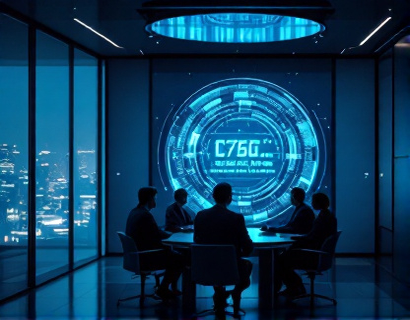Unlocking User Engagement: Transform Business Growth with Advanced Activation Technology
In today's competitive business landscape, user engagement stands as a critical factor for success. Companies that effectively engage their users not only enhance customer satisfaction but also drive retention and foster sustainable growth. This article delves into the transformative power of advanced activation strategies, designed to streamline interactions, boost customer satisfaction, and ultimately maximize business growth. By leveraging cutting-edge technology, businesses can unlock the full potential of their user base, ensuring a robust and loyal customer base.
User engagement is more than just a buzzword; it represents a strategic approach to building meaningful connections with customers. The core idea is to create experiences that resonate, involve, and retain users over time. Advanced activation technology plays a pivotal role in this process by automating and optimizing the engagement pipeline. This technology uses a combination of data analytics, machine learning, and personalized content delivery to create highly targeted and relevant interactions.
Understanding Advanced Activation Technology
Advanced activation technology is a sophisticated set of tools and methodologies that focus on enhancing user interactions with a brand or product. Unlike traditional engagement methods, which often rely on one-size-fits-all approaches, advanced activation leverages data-driven insights to tailor experiences to individual user preferences and behaviors. This personalization is key to increasing engagement and fostering long-term relationships.
At its core, advanced activation technology involves several key components. First, it utilizes comprehensive data collection to understand user behavior and preferences. This data is then analyzed using machine learning algorithms to identify patterns and predict user actions. Based on these insights, the technology delivers personalized content, offers, and interactions that are highly relevant to each user. This level of personalization not only enhances the user experience but also increases the likelihood of conversion and repeat engagement.
Streamlining User Interactions
One of the primary benefits of advanced activation technology is its ability to streamline user interactions. By automating routine tasks and providing seamless experiences, businesses can reduce friction and enhance user satisfaction. For instance, chatbots powered by natural language processing (NLP) can handle customer inquiries 24/7, providing instant and accurate responses. This not only improves customer service but also frees up human agents to focus on more complex issues.
Another aspect of streamlining interactions is the use of unified customer platforms. These platforms integrate various touchpoints, such as social media, email, and in-app messaging, into a single interface. This integration ensures that users receive consistent and cohesive experiences across all channels, reducing the likelihood of confusion or frustration. By having all customer interactions in one place, businesses can also gain deeper insights into user behavior and preferences, further enhancing their activation strategies.
Boosting Customer Satisfaction
Customer satisfaction is a direct result of effective user engagement. When users feel understood and valued, they are more likely to have a positive perception of a brand. Advanced activation technology contributes to this by delivering highly personalized and relevant experiences. For example, a retail company can use activation technology to send personalized product recommendations based on a user's browsing and purchase history. This not only makes the shopping experience more enjoyable but also increases the chances of a sale.
Moreover, advanced activation technology can proactively address user concerns before they become issues. By analyzing user feedback and behavior, businesses can identify potential pain points and take preventive measures. This proactive approach not only enhances customer satisfaction but also builds trust and loyalty. Users are more likely to return to a brand that demonstrates a genuine commitment to their needs and well-being.
Driving Retention and Loyalty
Retention is a critical metric for any business, and advanced activation technology plays a significant role in improving it. By creating engaging and personalized experiences, businesses can foster strong emotional connections with their users. These connections translate into higher retention rates as users are less likely to switch to competitors. Additionally, activated users are more likely to become advocates for the brand, recommending it to others and generating organic growth.
Loyalty programs, when enhanced with advanced activation technology, can be particularly effective. These programs can be tailored to individual user preferences and behaviors, offering rewards that are truly meaningful. For instance, a subscription-based service can use activation technology to send personalized offers and exclusive content to loyal users, keeping them engaged and motivated to continue their subscription.
Enhancing Performance and Scalability
Advanced activation technology not only improves user engagement but also enhances the overall performance and scalability of a business. By automating repetitive tasks and providing actionable insights, businesses can operate more efficiently. This efficiency translates into cost savings and the ability to allocate resources more effectively.
Scalability is another significant advantage. As businesses grow, the volume of user interactions increases exponentially. Advanced activation technology can handle this growth without compromising on quality. Machine learning algorithms can process vast amounts of data in real-time, ensuring that user experiences remain personalized and relevant, even as the user base expands.
Case Studies and Real-World Applications
To illustrate the impact of advanced activation technology, consider a few real-world examples. A leading e-commerce platform implemented an advanced activation solution to enhance user engagement on their website. By using machine learning to personalize product recommendations and email campaigns, they saw a 25% increase in conversion rates and a 15% increase in customer retention. Another example is a financial services company that used activation technology to streamline customer onboarding. The result was a 30% reduction in onboarding time and a significant improvement in customer satisfaction scores.
These case studies demonstrate the tangible benefits of advanced activation technology. By focusing on personalization, efficiency, and proactive engagement, businesses can achieve substantial improvements in user engagement and overall performance.
Implementing Advanced Activation Strategies
For businesses looking to implement advanced activation strategies, the first step is to assess their current engagement processes. Identify areas where automation and personalization can add the most value. This might involve integrating chatbots, enhancing email marketing campaigns, or creating a unified customer platform.
Next, invest in data infrastructure to collect and analyze user data effectively. This includes implementing robust data management systems and ensuring compliance with data protection regulations. The quality of data is crucial for the success of activation strategies, as it forms the foundation for personalized experiences.
Collaboration with technology partners or agencies specializing in activation solutions can also be beneficial. These experts can provide valuable insights and help tailor the technology to specific business needs. Additionally, continuous monitoring and optimization are essential to ensure that activation strategies remain effective and aligned with evolving user preferences.
Conclusion
In conclusion, advanced activation technology offers a powerful way for businesses to transform user engagement and drive sustainable growth. By streamlining interactions, boosting customer satisfaction, and enhancing retention, these solutions provide a competitive edge in today's market. As businesses continue to seek innovative ways to connect with their users, advanced activation technology will play an increasingly vital role. Embracing this technology is not just an option but a necessity for those aiming to thrive in the digital age.










































